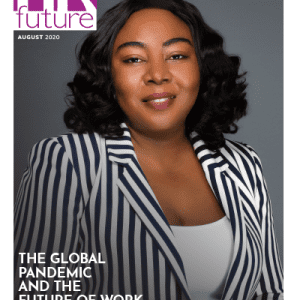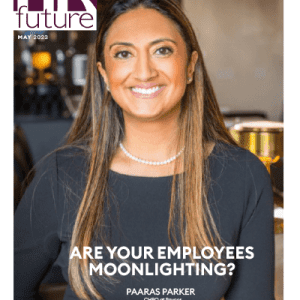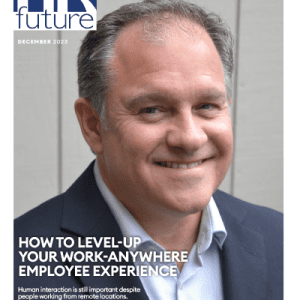With so many conflicting pieces of advice on resume writing, we decided to use a data-driven approach to find definitive answers to job seekers’ most pressing questions.
How to write a resume? Easy, just Google it, read a few expert-curated articles on the subject, and you’re good to go. It’s just that… So many “expert” views on resume writing are contradictory.
Are objectives a thing of the past or are those still valid? Should you add star ratings to your skills? What about two-column resumes—the way to go in 2021, or a surefire way to fail any ATS scan?
Here’s the thing: don’t trust opinions. Create a job-winning resume according to hard data. The data we collected.
See, to find out what the best practices for resume writing are, we surveyed over 500 American recruiters, HR professionals, or team managers responsible for hiring.
We asked them about the ideal resume layout, what to write in each section, and how to bot-proof your resume. Here’s what they told us.
Dress to Impress: How to Lay Out and Format a Resume
Yes, resume writing can seem a strenuous process. After all, you have to tell a story of years of your career in 400 words or so. We’ll make it easier for you. Let’s divide the work into some digestible chunks.
Before you actually start “writing” your resume, you need to think about how to organize the document to make it easily skimmable for recruitment decision-makers.
First things first. We asked recruiters about what sections you always have to include in a resume.
These are the “must-have” resume sections
- Contact information
- Resume profile (summary or objective)
- Work experience
- Education
- Soft skills
- Hard skills
That’s right. You need two separate skills lists, one for soft skills (such as “Communication” or “Teamwork”) and another for hard skills (think, “Cloud computing” or “Graphic design”). 76% of recruiters prefer the two types of skills separated from one another on a resume.
And one more important note: in your contact information section, always include a link to your LinkedIn profile. Not doing so is a grave mistake according to 96% of recruiters.
Alright, so you have the basic outline of the most important resume sections. If you’re starting to think it might get a little too crowded in there, don’t fret.
To save space and make your resume easier to skim, use a side column for your skills, contact details, or additional information. What used to be perceived as a resume gimmick now is considered best practice: 77% of hiring pros we surveyed think two-column resumes are better than single-column ones.
How to divide a resume into two columns?
The easiest way is to use an online tool dedicated to creating and formatting resumes. Alternatively, in MS Word or GoogleDocs, you can create a two-column table, make one of the columns slightly narrower than the other one and, at the end of the process, erase the table lines.
And, while we’re discussing space-saving tricks, let’s see if it’s really this important.
How long should your resume actually be?
A study by Zety revealed that, in 2021, most recruiters prefer two-page resumes. For senior roles, a two-page resume is 2.9x more likely to score an interview than a single-pager. But that also holds true for entry-level jobs (a two-page resume is 1.4x more likely to be selected for the next stage).
Don’t get me wrong—two-column resumes are still the way to go. They make resumes easier to review quickly and find whatever is most important to the recruiter. It’s just that you don’t need to squeeze everything onto a single page.
One more thing—
Deciding what to put on a resume is equally important as deciding what to omit. When working on the outline of your job application, always keep the following in mind.
Things you should never put on a resume
As another one of our studies uncovered, there are certain pieces of information that should never appear on a professionally-written resume:
- 90% of professional resume writers say you shouldn’t include a list of hobbies and interests if you have more than 5 years of experience. Even if you have less experience than that, 77% of resume writing pros advise against a hobbies section.
- You shouldn’t list your references according to 89% of resume writers.
- Similarly, 88% don’t think the phrase “references available upon request” is necessary.
Right, the boring, technical part is over, I promise. You have the whole setup of your resume sections taken care of. Time to think about…
Best practices in resume design
If you’re thinking “oh no, I have zero design skills, this is clearly beyond me,” again, take heart. You have technology on your side.
Plus, there are dozens of resume templates available in most types of word-processing software, and millions to download online. What sort of design is best?
First of all, it’s safer to go for a black-and-white resume rather than use fancy colors: 72% of recruiters think monochromatic resumes are best.
If you do go for a dash of color, don’t pick anything too bold. Grey, beige, or blue can work fine. Red, yellow, or other types of bright palette might do you more harm than good.
Also, you might be tempted to try and stand out from the crowd by picking a non-standard, creative resume format (such as an infographic-based one, or a highly visual template). It’s not too good an idea: 71% of recruiters like formal, standardized resumes best and only 7% prefer creative designs.
Speaking of fonts, in another survey we ran, we asked Certified Professional Resume Writers about their favorite resume fonts. Here are the most popular choices:
- Calibri: 44%
- Times New Roman: 13%
- Arial: 11%
- Helvetica: 8%
- Garamond: 6%
Whatever dilemmas you’re facing regarding the styling of your resume, don’t obsess over it.We asked our respondents whether design or contents matter most for them in resumes:
- 51% said contents are their top priority
- 38% think both are equally crucial
- 11% picked design over the actual contents.
So, let’s look into how to write a resume, once you’ve learned what to include.
Highlight What Matters Most: How to Craft the Contents of Your Resume
Some 8 years ago, Ladders published a notorious study about how an average resume only gets 7 seconds of recruiters’ eye time. Almost every career website would mindlessly share that piece of data ever since. Well—
The reality turns out to be slightly less horrific.
According to our survey, a vast majority (64%) of hiring decision-makers spend between 3 and 6 minutes on every resume they review. Only 2% said they take less than a minute to scan a resume. To you, that means that, first of all, yes, they will read your job application, not just skim it, but you still don’t have too much time to impress them. So—
Make every word count. What I mean here is, not all words are equal and, most certainly, not all resume sections are, either.
What part of your resume should you mostly focus on?
When asked which resume section is the most important when evaluating mid- to senior-level candidates:
- 46% of respondents chose work experience
- 15% education
- 13% skills
- 3% resume profile
- 22% other resume sections.
Not really surprising, is it? If you’re a job seeker with some work history under your belt, this is what’s going to be of utmost importance to the ones hiring you. Take note. Make sure your work history section tells a compelling story of your career. Use action words. Focus on your accomplishments, not just day-to-day duties. If you can prove you did well in your past jobs it will seem much more likely that you’ll replicate your results in the future position.
What’s interesting about the data above is how few respondents think a resume profile is important. While it can work as a nice introduction to the rest of your resume, it seems it’s not as valuable nowadays as it used to be: 70% of recruiters think it’s better to skip the resume profile part than to write a generic one.
Also, remember to add some “extras” to your resume. What are those “other sections” 22% of recruiters think are the most important? These are things like certifications, extra training, conference attendance, or publications. Items that don’t just tell but actually show your value.
What about candidates with little job experience or fresh graduates? Turns out, it’s still their experience that matters most. These are sections picked as the most critical in entry-level resumes:
- 30%: work experience
- 21%: skills
- 19%: education
- 5%: resume profile
- 25%: other sections
Even if you don’t have much experience, make this part of your resume the main selling point. Mention any gigs you’ve had, including non-paid jobs, internships, or part-time positions.
And, again, remember about “other,” non-mandatory sections. Things like volunteer experience, academic achievements, awards and honors can make all the difference.
Why are those extra sections so important?
First of all, recruiters pay attention to them. Secondly, as a Zety’s study of 133,000 US resumes revealed, 66% of candidates do include them. Amongst the most popular, there are:
- Languages: 31% of resumes
- Certificates: 27%
- Additional Activities: 21%
- Interests: 19%
- Software: 18%
- Courses: 11%
Some job seekers tend to “bury” their certifications or foreign languages within a skills section. That’s a practice acceptable to 37% or recruiters; 44% prefer to see languages spoken or certificates under separate subheadings.
No matter your experience level there’s one more quick and simple thing you can do to improve your chances of getting hired dramatically:
Plugging metrics into your resume
85% of recruiters think it’s a good idea to list figures and metrics to illustrate your achievements. And, for some reason, candidates find it very difficult to do. That’s exactly why, if you do it well, you’ll have an instant edge over your competitors.
Even if you think you don’t really work with “hard numbers,” there are two simple strategies to help you quantify your achievements:
- Frequency: for instance, “resolved 50+ customer tickets daily,” instead of “responsible for handling tickets,” or “published 3 to 5 Facebook ad campaigns every week” instead of “responsible for social media marketing.”
- Scale: think about “spearheaded sales enablement across 8 national markets” or “worked with annual budgets of $300,000.”
Adding numbers to your resume does two things: firstly it immediately grabs readers’ attention and, secondly, it provides the much-needed context for your achievements—lets people see how well you did what you did.
All that said, don’t overdo it. 38% of hiring pros said that if you put too much emphasis on quantified accomplishments, you might come off as bragging.
How far back should your work history section go?
It should be super clear to you by now: your work experience should be the chief focus of your resume. But is the whole of your work history important? Perhaps not.
Our recent study of resume best practices suggests that 33% of resume writers think candidates should only cover their past 10 years of experience on a resume, while 35% lean towards including 15 most recent years.
The bottom line: do elaborate on, roughly, your most recent 5 years of experience. Include 5–8 bullet points below entries within that time frame. For jobs older than that, you can limit yourself to 3 bullet points outlining your key achievements. The reader won’t that much about what you did in the dim and distant past.
Wait, did I say “the reader?” That’s interesting. You’re not quite sure who that reader might be, are you? If so, then…
Who should you address your resume to?
That’s the awkward part of writing a resume—you don’t really know who gets to lay their eyes on it. An external recruiter? A member of an in-house HR team? Or, perhaps, your prospective boss?
At some point, it will likely be all (or most) of the above mentioned. But the person you should address your resume to is the hiring manager—72% of our respondents advise to do so.
Why? Firstly, it’s the most important decision-maker in the process. Secondly, this is the person most likely to understand your career progression, scope of responsibilities, or the nature of your day-to-day tasks. Finally, external recruiters or HR teams run the recruitment at the actual hiring manager’s request—if they like your resume, they will show it to the top stakeholder anyway.
At the same time, wait for it, only 0.14% candidates use this strategy! You connect the dots. Deciding to apply directly to the manager of the team you’re hoping to join is the single best thing you can do to boost your chances of getting hired. Especially since it helps you avoid automated screening software—heartless robots deciding whether or not you’re a fit for the job based on their cruel algorithms. More on that in the next section.
Stay Woke: It’s the Dawn of the Age of Robots
Let’s say you can’t find contact details of the actual hiring manager. Or that this job application strategy is against a given company’s policy. You’re staring in the eyes of the dreaded resume black hole: an automated recruitment system.
When applying via a job board or even an internal careers site, you can be fairly certain that your resume will go through an initial screening done by AI-based software.
Sadly (or thankfully?), the robots aren’t perfect yet and hiring managers know it, too. When asked whether they trusted the recruitment bots to find good candidates, only 65% of respondents said they fully did.
What’s more, 98% of recruitment pros believe qualified candidates are filtered out in the initial, automatic resume scan by mistake. 55% think it happens “always” or “often.”
Yes, it does sound rather harsh. The thing is, there’s a lot you can do to help robots do their job well (pick YOU, that is):
- Keep your resume formatting neat and tidy. You can use a free online ATS-compatibility checker to see if you’re on the safe side.
- Make sure to use the right keywords. How to identify those? Look at the job ad! Certain skills referred to in the “requirements” section should appear on your resume.
- Make smart use of the job titles on your resume. If necessary, you can tweak the wording to better match the job on offer: for instance, say “SEO Site Owner” as opposed to “Site Owner.” 56% of hiring managers think it’s perfectly fine to do so. As for the rest? Well, they won’t find out.
A Few Cautionary Tales
At the end of our survey, we asked hiring decision-makers about the worst thing they ever saw on resumes. Here, we present you some of the most ridiculous stories. Just… don’t be that guy.
What’s the worst thing you’ve ever seen on a resume?
- One candidate demanded a wristwatch as a benefit.
- A resume with two different full names in the contact section.
- A candidate fired for stealing money from his previous employer.
- Losing one’s virginity is, without a doubt, an important moment in one’s life. Only… we’re not sure if it’s appropriate to discuss it on a resume.
- Nobody told this lady that a resume shouldn’t be a showcase of one’s favorite colors. Or fonts. Or clip arts.
- Someone included cat training as relevant experience for a customer happiness officer job.
- We had one applicant with 6 pages of nonsense about his home and family and the town he lived in.
- High school grades.
- “Sexual skills.” No, not important for that particular job.
And that’s a wrap! I hope you’re well-equipped to write a data-informed resume, hack the job application process, and beat recruiters at their own game. Not so sure you are? Make sure to drop me a line in the comments and I’ll happily get back to you ASAP.
Methodology and Limitations
This survey was run by OnePoll on behalf of ResumeLab. In it, 506 recruiters, HR specialists and hiring managers were surveyed.
The data rely on online self-reports after eligibility screening. Each participant responded without any researcher administration or interference. Potential issues with self-reported data include but are not limited to exaggeration, selective memory, and attribution errors. Some questions and responses have been rephrased for clarity and ease of understanding for readers. In some cases, the percentages presented may not add up to 100 percent: this is either due to rounding or due to responses of “neither/other/don’t know” not being presented.
Sources
- https://doi.org/10.1257/aer.104.3.1014
- https://www.jobvite.com/lp/2019-jobvite-recruiting-benchmark-report/
- https://doi.org/10.1080/13594320902903613
- https://resources.glassdoor.com/50-hr-recruiting-stats-2019.html
- https://clutch.co/hr/recruiting/statistics-average-job-search-2018
- https://resources.entelo.com/download-2018-entelo-recruiting-trends-report
- https://www.capterra.com/recruiting-software/impact-of-recruiting-software-on-businesses
- https://www.g2.com/categories/applicant-tracking-systems-ats
- https://zety.com/blog/resume-statistics
- https://www.theladders.com/static/images/basicSite/pdfs/TheLadders-EyeTracking-StudyC2.pdf
- https://www.talent-works.com/2017/09/27/social-media-recruitment/
- https://www.shrm.org/hr-today/trends-and-forecasting/research-and-surveys/pages/skills-gap-2019.aspx
- https://resumelab.com/resume/best-practices
- https://resumelab.com/resume/mistakes
Michael Tomaszewski is a resume expert and a career advice writer for ResumeLab. He is a certified professional resume writer (CPRW) and a member of the Professional Association of Résumé Writers & Career Coaches.
This article first appeared on ResumeLab.






















